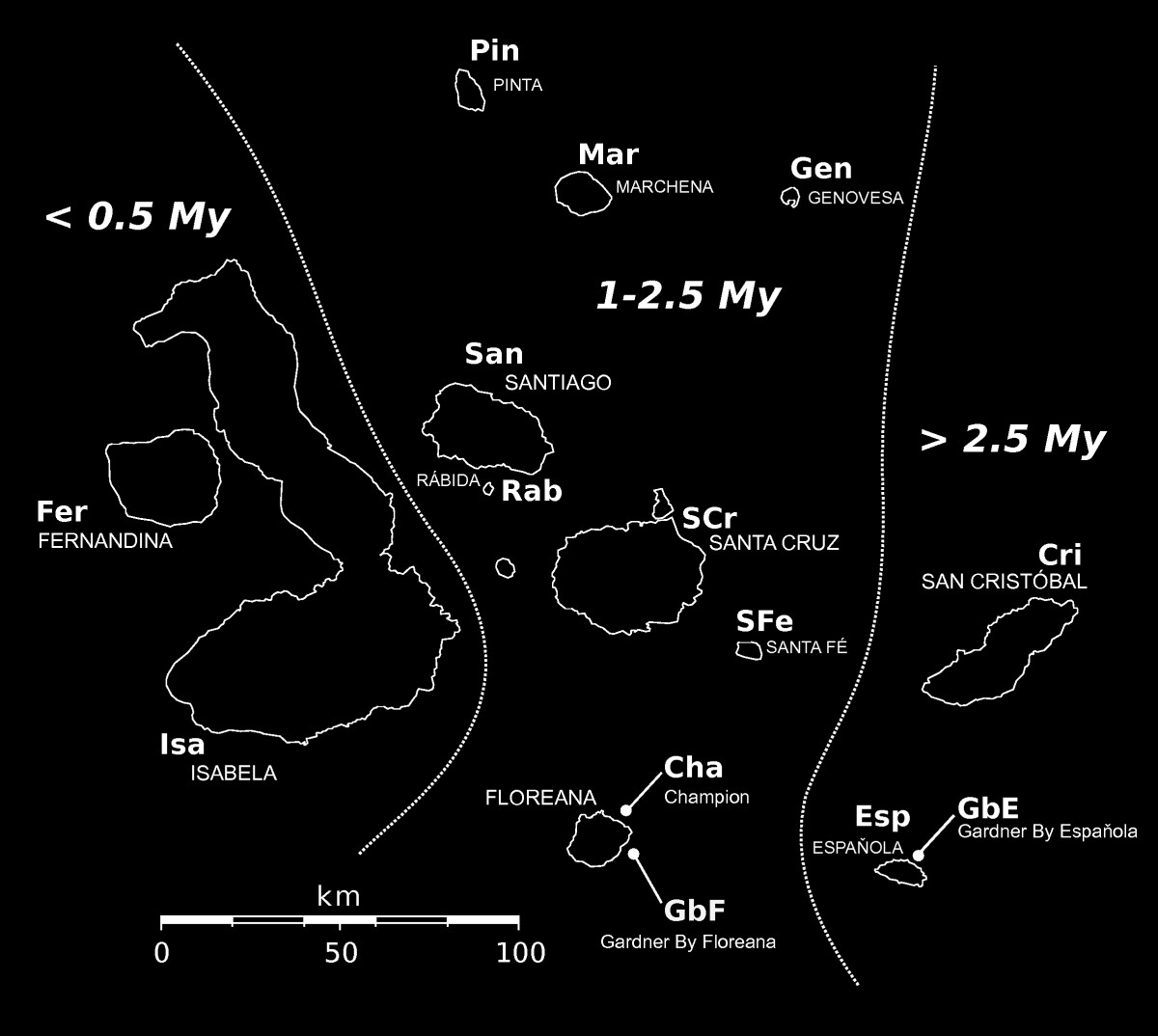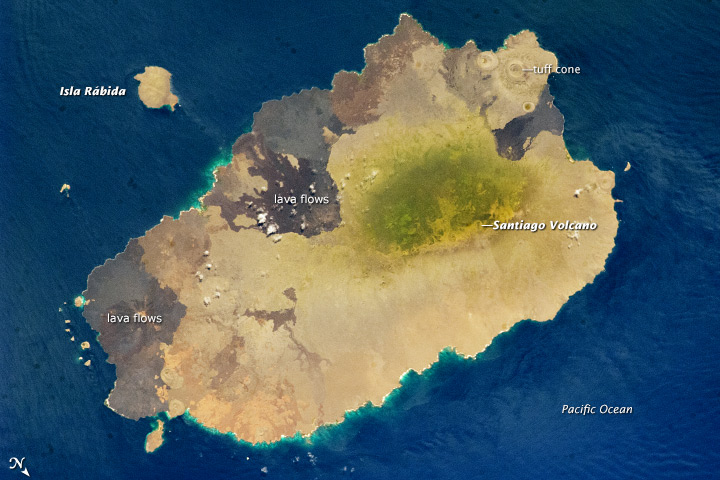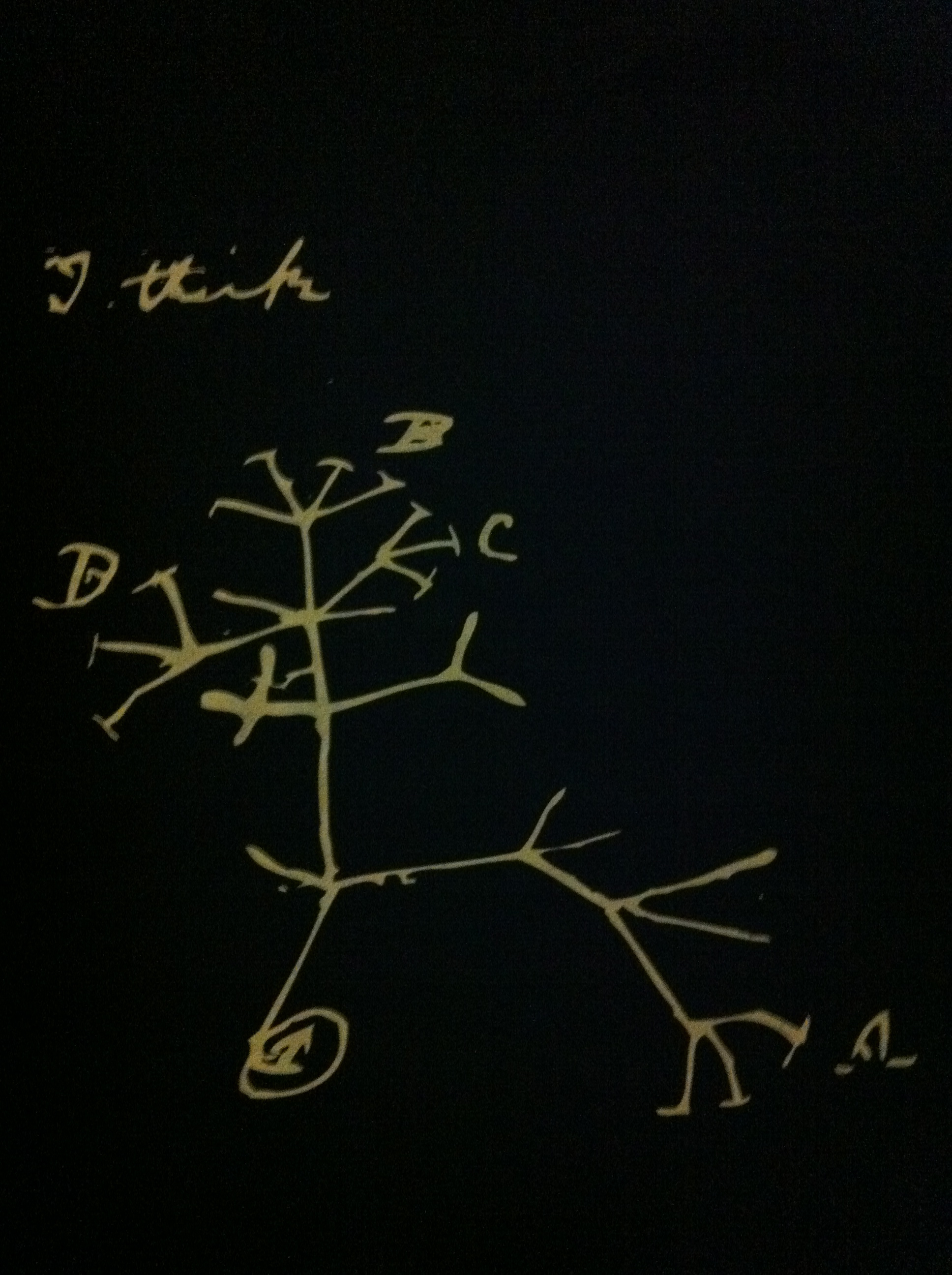The Galapagos islands has been a pivotal single location where everything came together in Darwin’s mind. The geology of the archipelago and almost every species (Tortoises, iguanas, finches) he observed on each island showed significant variation.
The Galapagos Islands, which are part of Ecuador are about 1000 km (620 miles) west of South America. As the three craters on the largest island (Isabela Island) suggest, the archipelago was created by volcanic eruptions. Each year roughly 60,000 tourists visit these islands.
During his month long stay initially Darwin was mostly interested in geology. Being on a geological hotspot along the Nazca plate he saw how new land is being created on these volcanic islands. The ages of the islands were sequential from youngest to oldest.
The climate of the Galapagos Islands varies seasonally and yearly. Coastal areas and higher elevations also show a large temperature difference. Cool Humboldt Current makes the climate of the Galapagos Islands mild and dry most of the time.
From May to December (garúa season) when the winds blow in a southeasterly direction, the shores of the southern islands are bathed in cool waters, chilling the air and creating unusually cold conditions for equatorial islands. During this period, it becomes rather dry on the coastal regions. Succulent plants such as lichens and cacti thrive in these areas. At the same time in higher elevations, condensation of clouds support the thick vegetation (see the photograph of Santiago island taken on October 18 2012 with green areas close to the summit of it’s volcano). From January to April there’s a rainy season. Winds slow down and warmer sea currents surround the archipelago. Heavy rains in the upper elevations forms streams down to the coast.
El Niño events interrupt the Humboldt Current and warm waters move toward the shores of South America and the Galapagos Islands. The warm seas bring very heavy rainfall to the region. El Niño usually begins in December and lasts a few months. Sometimes, a particularly severe El Niño can cause floods, landslides and other destructive natural disasters.
El Niño induced warm seas severely affect the marine iguana population. Many seabirds, sea lions, fur seals, hammerhead sharks, whalesharks and other fish disappear. Meanwhile, waved albatrosses, penguins and cormorants fail to breed. The growth of green algae becomes stunted which forms the base of the food chain for these animals.
A century after his death 2013 was a commemorative year for the co-discoverer of the theory of evolution Alfred Russel Wallace. Darwin and Wallace were well known in their time but Wallace’s name gradually has been overshadowed by Darwin. As the ship heads towards Tahiti and then to Indonesia the prodigious collector Wallace is remembered with his favorite species the birdwing butterfly and the Standardwing bird-of-paradise.
Just like Darwin’s finches, many bird species became models of evolution for speciation such as the birds of paradise of Malay Archipelago or Juncos of Central and North America.





0 Comments
You can be the first one to leave a comment.